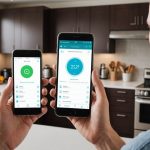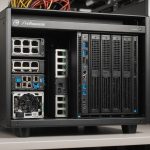Understanding Smart Home Management
Smart home technology plays a pivotal role in making homes safer and more accessible, especially for elderly care. By integrating various smart devices, such as sensors, alarms, and cameras, both caregivers and elderly users can enjoy peace of mind. These technologies allow caregivers to monitor their loved ones remotely, ensuring that immediate help is available if needed.
The Role of Smartphones
Smartphones are central to this advanced ecosystem, acting as a hub that connects and controls smart home devices efficiently. Through dedicated apps, users can manage lighting, heating, and security systems with ease. The benefits of smartphones extend further by providing real-time updates and notifications, which are crucial for caregivers to address potential emergencies promptly.
Topic to read : Step-by-step smartphone setup for your smart video doorbell: the complete installation guide
Advantages of Smart Devices in Elderly Care
- Enhanced safety: Automated alerts and controls can prevent accidents.
- Improved communication: Easy connections with caregivers or emergency services.
- Independence: Seniors can operate devices without much physical effort.
Overall, integrating these technologies not only boosts safety and security but also promotes independence and comfort for the elderly, allowing them to age in place gracefully.
Essential Apps for Smart Home Management
In the realm of smart home apps, selecting the right mobile solutions becomes essential for seamless operation and increased usability. For those catering to elderly users, choosing apps with simplicity in design and intuitive functionality contributes significantly to their ease of use.
Additional reading : Master your smart home: use your smartphone for effortless voice control of appliances
A well-regarded smart home app should effectively integrate various smart devices, from lights to security systems, into a single interface. This centralisation ensures efficient control and monitoring, saving users the hassle of juggling multiple apps. Some popular options include Apple’s HomeKit, which offers a streamlined user experience, and Google’s Home app, lauded for its comprehensive device support.
For enhanced elderly care applications, features like large, easily readable icons and voice control options can significantly improve user interaction. Compatibility with assistive devices and emergency response features also add a layer of safety, often highlighted positively in user reviews. Testimonials often cite how these features simplify life, providing peace of mind and independence for seniors.
When evaluating app effectiveness, consider user feedback to gauge real-world reliability and ease of navigation. In essence, choosing the right smart home app hinges on assessing your specific needs and aligning them with user-friendly technologies.
Integrating Smart Devices for Enhanced Care
Ensuring elderly safety through smart devices integration is crucial for improved quality of life. These devices facilitate home automation, providing both convenience and peace of mind.
Smart Lighting Solutions
Smart lighting is beneficial for elderly residents. It enhances visibility, reduces fall risks, and can be scheduled to simulate natural light patterns, promoting better sleep cycles. Setting up smart lights is straightforward: connect them to your home Wi-Fi and control via a smartphone app. Popular options include Philips Hue and LIFX, which offer voice control and varied light settings.
Smart Locks and Security Systems
Reliable security solutions are vital for elderly residents. Smart locks improve safety by allowing controlled access and alerts about door usage. They often offer features like keyless entry and remote control. Systems like August Smart Lock and Yale Assure are accessible via smartphones, providing real-time monitoring and peace of mind.
Health Monitoring Technologies
Health monitoring is enhanced with modern devices that track vital metrics like heart rate and activity levels. These integrate seamlessly with smartphones, offering real-time data and alerts. Wearables like Fitbit and Apple Watch, along with smart home devices like Withings scales, support proactive health management and improve daily care regimens.
Creating a User-Friendly Smart Home Environment
Designing an elderly-friendly smart home requires special attention to ensure that accessibility and ease of use are priorities. One key aspect is creating an intuitive layout for smart home systems. Smart devices need to be placed strategically, with thoughtful consideration for those less familiar with technology. This includes ensuring all controls are easy to reach, visible, and labelled clearly.
Training elderly users to navigate smart technology is equally important. Offer hands-on demonstrations and step-by-step guidance to enhance their user experience. Simple instructions can foster confidence and independence, while diminishing the intimidation often felt with new gadgets. Patience is crucial during this process; progressing at a comfortable pace for the user will yield the best outcome.
Another fundamental factor is the importance of a simplified interface, particularly for caregiver use. Complex systems can lead to frustration and potential errors in urgent situations. Thus, smart home systems should feature clear, minimalistic designs tailored to straightforward interaction, ensuring both efficiency and reliability. Investing in elder-friendly interfaces guarantees a seamless experience for all users, contributing to a stress-free and harmonious home environment.
Case Studies and Practical Examples
Let’s delve into smart home success stories that highlight how technology can transform daily living. Jane, for example, implemented elderly care solutions for her father, who suffers from dementia. By using sensors and cameras, she ensures his safety while granting him some independence. These changes improved his quality of life significantly.
In another scenario, the Smith family integrated smart lighting and automated appliances to support their elderly mother. These technologies not only simplified her day-to-day tasks but also improved energy efficiency in their home. Such real-life applications demonstrate the practicality of smart technology in addressing specific needs.
One of the most striking examples is a community project where smart thermostats and security systems were installed in seniors’ homes. The residents reported increased comfort and peace of mind, reinforcing the impact of tailored elderly care solutions.
From these examples, we learn that careful planning and choosing the right technology are crucial for successful smart home implementations. These stories emphasize the importance of understanding specific needs and showcase the potential of technology to enhance lives effectively.
Future Trends in Smart Home Technology for Elderly Care
The future of smart homes is increasingly intertwined with the realms of elderly care. As population demographics shift, there’s a growing emphasis on technological advancements designed to cater to the needs of the ageing community.
Emerging technologies are transforming the landscape of smart home solutions. For instance, sensors integrated into everyday items can monitor health metrics in real-time, providing timely alerts to caregivers. This method of passive monitoring reduces the burden on individuals to constantly self-report their health status.
Smartphone management is also evolving, making it easier to manage various aspects of elder care remotely. Predictive algorithms can assess behavioural patterns, identifying potential health risks before they manifest. This shift towards proactive care management underscores the innovation in elderly care.
Artificial intelligence and machine learning are at the forefront of these advancements, enhancing the capabilities of smart devices. AI-driven personal assistants can assist with medication reminders, while machine learning algorithms improve personalization in care, adapting solutions to the unique needs of each individual.
These technological strides hold promise for a future where elderly care is increasingly autonomous and efficient, meeting the growing demand for innovative senior living solutions.






